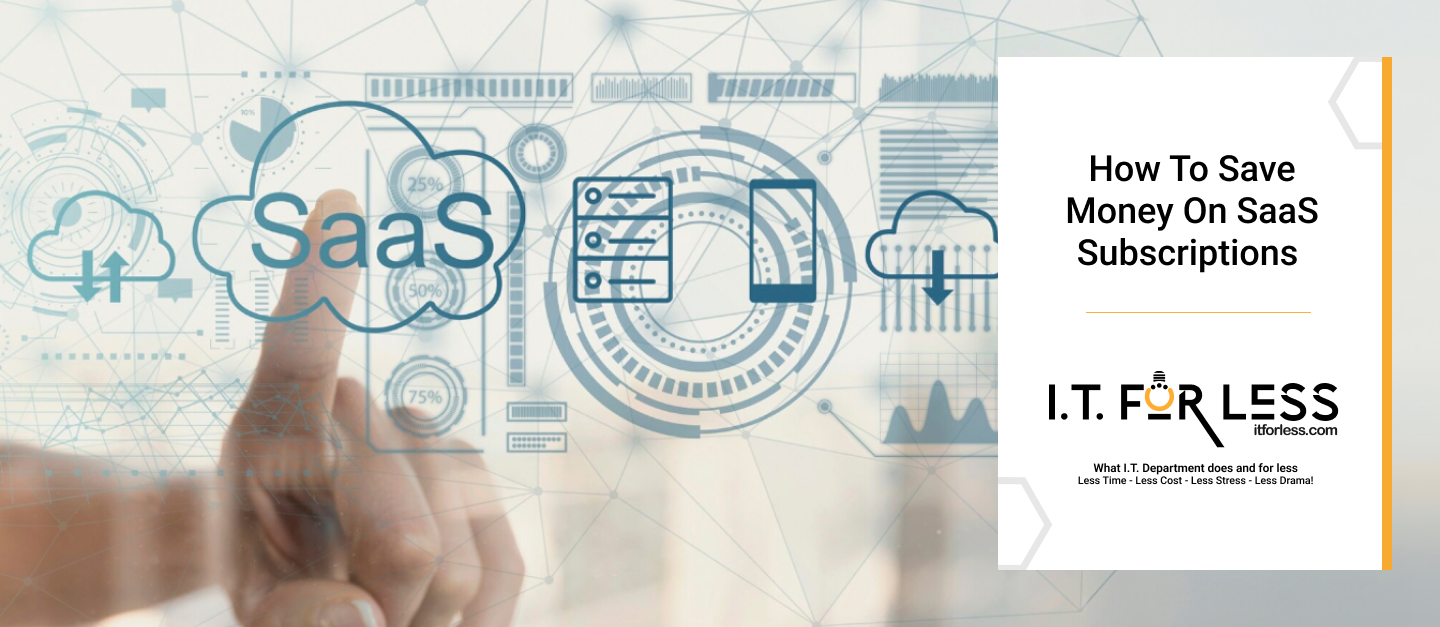In a world dominated by cloud tools and software-as-a-service (SaaS) apps, businesses are finding themselves with an ever-growing stack of subscriptions and an ever-increasing monthly bill. While SaaS tools are vital for productivity, collaboration, and growth, they can quickly become a silent budget killer if left unchecked.
At I.T. For Less, we help businesses optimize their SaaS environments and reduce unnecessary spending. In this guide, we’ll walk you through proven strategies to save money on SaaS subscriptions while keeping your operations smooth and efficient.
1. Conduct a SaaS Audit
The first step to saving money is understanding what you’re paying for.
Start with a SaaS audit:
- List all active subscriptions across departments
- Include costs, renewal dates, number of users, and tool owners
- Identify who’s actually using each tool (and how often)
Use spreadsheets, expense reports, or a SaaS Management Platform (SMP) to compile the data.
Why it matters: You may find tools you forgot about, are duplicating, or no longer need.
2. Eliminate Unused or Underused Tools
Many companies pay for tools that are barely touched.
Actionable steps:
- Review login data or usage reports
- Survey teams about what they truly use
- Cancel or pause subscriptions with low activity
Pro tip: Set a threshold (e.g., tools used by less than 20% of the team) for review or removal.
3. Consolidate Redundant Tools
Multiple teams using different tools for the same purpose? Time to streamline.
Common overlaps include:
- Slack + Teams
- Asana + Trello + Monday.com
- Google Drive + Dropbox + OneDrive
Solution: Choose a company-wide standard for each tool category and consolidate use.
Benefits: Lower costs, less confusion, and better collaboration.
4. Negotiate with Vendors
SaaS pricing is more flexible than most people think especially if you’re a loyal customer or buying multiple licenses.
Tips for negotiation:
- Ask for discounts before renewal
- Mention competitive tools or lower pricing elsewhere
- Bundle multiple products from the same vendor
- Commit to longer contracts (but only if you’re confident you’ll use it)
Bonus: Many vendors offer “downgrade” plans for smaller teams or startups.
5. Optimize Licenses Based on Usage
You may be paying for more licenses than you need or for premium features that go unused.
Strategies:
- Use analytics from the SaaS platform or SMP to track active users
- Switch infrequent users to lower-tier plans or shared accounts (where allowed)
- Eliminate “zombie licenses” (assigned but inactive users)
Example: Moving a user from a $30/month plan to a $10/month basic plan saves $240 per year.
6. Manage Renewals Proactively
Auto-renewals are sneaky budget drainers. SaaS vendors count on you to forget renewal dates.
Tactics to avoid surprise charges:
- Set calendar reminders 30-60 days before renewal
- Maintain a shared subscription calendar
- Review and renegotiate contracts before they renew
Tip: Review monthly invoices to catch any unexpected renewals.
7. Use Annual Billing When Appropriate
Most vendors offer a 10–30% discount for annual payments over monthly ones.
When it’s a good idea:
- You’ve used the tool for a while
- It’s mission-critical to your operations
- You’re happy with the service
When to avoid:
- If the tool is new or you’re still testing it
- If your team is likely to change rapidly
8. Explore Free or Open-Source Alternatives
Many popular SaaS tools have free or lower-cost competitors that offer similar functionality.
Examples:
- Google Sheets instead of Excel 365
- ClickUp instead of Asana or Monday.com
- Jitsi Meet instead of Zoom
If the tool’s feature set matches your needs, switching can yield significant savings.
9. Implement Centralized SaaS Management
The bigger your tool stack, the harder it is to manage manually. That’s where SaaS Management Platforms (SMPs) come in.
Top platforms include: Torii, Zluri, BetterCloud, Blissfully
They help you:
- Track usage across apps
- Identify overlapping tools
- Optimize license allocations
- Flag upcoming renewals
Even smaller businesses can benefit from using a simple system or working with an MSP like I.T. For Less.
10. Establish SaaS Procurement Policies
Avoid budget bloat by setting clear rules on how SaaS tools are purchased and approved.
Include guidelines like:
- Who can approve new software
- How new tools are vetted for cost and security
- When team-wide review is required for a new subscription
Result: Less shadow IT and better budgeting control.
11. Rotate Shared Licenses Where Legal
If your team uses certain apps infrequently (e.g., design or analytics tools), consider rotating logins among users — but only if it’s within the vendor’s terms.
Why it works:
- Avoid overpaying for licenses that sit idle
- Still give access to those who need it occasionally
Note: Always check vendor agreements to stay compliant.
12. Work with a SaaS Cost Optimization Partner
Don’t have time to manage all of this on your own? That’s where I.T. For Less comes in.
We offer:
- SaaS stack audits
- Usage and cost analysis
- License right-sizing
- Subscription cancellation support
- Renewal and negotiation assistance
Let us save you time and money while ensuring your tools are working for you not against your budget.
Final Thoughts
SaaS spending can easily spiral out of control — but it doesn’t have to. With the right strategies and support, your business can take control of your subscriptions, optimize spend, and boost productivity.
Need help simplifying your SaaS stack and slashing your software bill?
Let I.T. For Less show you how.
📧 Contact us | 📞 Schedule a Free Consultation | 🌐 www.itforless.com
